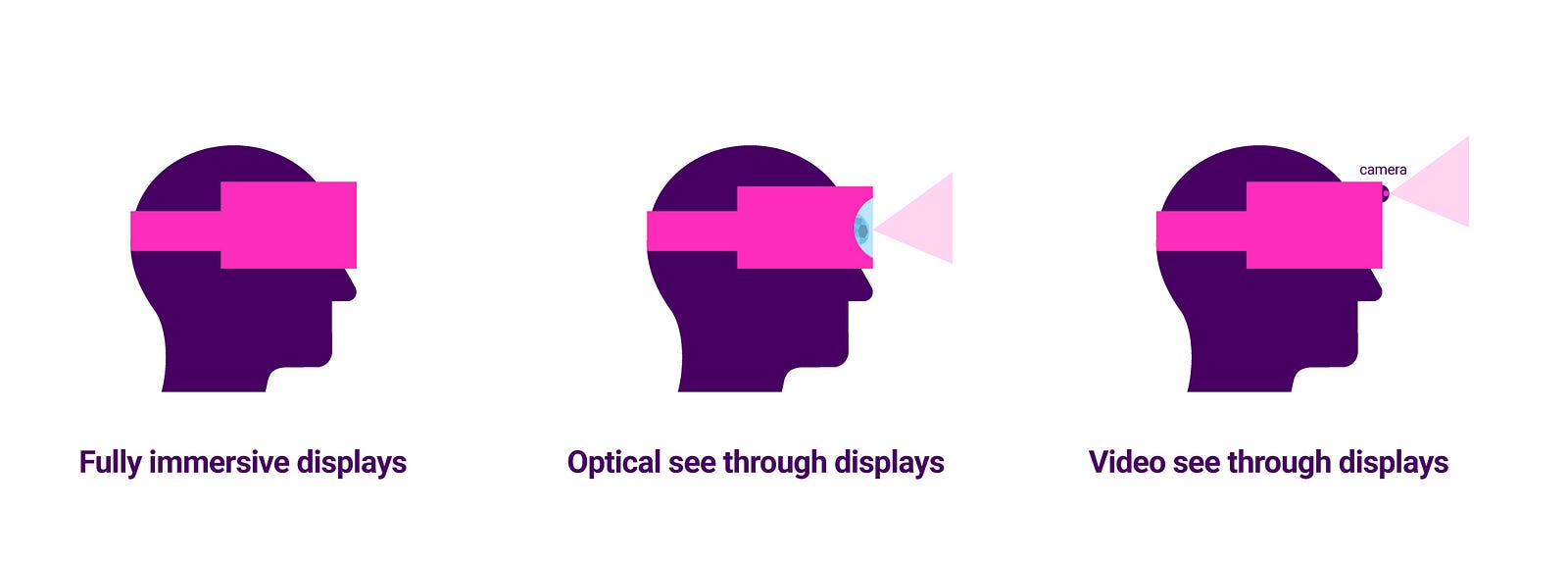Displays for Augmented and Virtual Reality
Ocularity is the measure of the number of eyes needed to see something. Since most of us have a maximum of two eyes, the limit of ocularity in smart displays is likewise.
Monocular displayThis display provides a single channel for viewing often through a small display element and lens. The channel is positioned in front of one eye where the user is free to view the real world completely through another eye. Monocular displays are often used as information displays due to their small form factor. However, these type of displays provide no stereo depth cues and often result in very low contrast. Google Glass and Vuzix Smart Glasses are types of monocular display.
BiocularThis type provides a single viewing channel to both eyes by means of internal reflections. Biocular displays lack stereopsis and are suitable for close proximity tasks.
BinocularEach eye gets a separate view in these type of displays creating a stereoscopic view. These display types provide the most depth cues and a sense of immersion however, they are the heaviest, most complex and computationally intensive displays. Microsoft’s Hololens, DAQRI Smart helmet and Epson’s Moverio are all types of binocular augmenting displays.
Video see through
With these type of smart glasses, the user views reality that is first captured by one or two cameras mounted on the display. These camera views are then combined with computer generated imagery for the user to see. The HTC Vive VR headset has an inbuilt camera which is often used for creating AR experiences on the device.


Immersive displays
Most Virtual Reality headsets are fully immersive. These stereoscopic displays are combined with sensors to track position and orientation. They completely block the user’s view of the outside world like in the book ‘Ready Player One’.
Immersive headsets
Most high-performance immersive systems like the HTC Vive and Oculus Rift are PC/console driven while cheaper consumer based systems like the Google Cardboard and Samsung’s Gear VR function as standalone devices coupled with a smartphone.


Apart from VR headsets mentioned above, there is another interesting category of immersive displays that require users to wear little or no appliances on their bodies. Following are the two most popular ones.
Caves and Walls
These systems come in a variety of shapes and sizes from multiwalled displays to multi-projector hemispherical displays. These types of displays are most common in the scientific and professional communities. These are mostly multi-user scenarios where all participants experience the 3D simulations passively. These displays often have a provision for interactivity to a limited number of participants.
Hemispheres and Domes
These are popular in many industries especially defense and aviation. The provide considerable precision in graphics along with room for multiple users. The fact that these systems are untethered is a significant advantage over other immersive displays.
Each of these device types have been engineered around technologies developed for other purposes. Given the extreme resolutions of display technologies in development, it is almost certain that flat panel based HMDs might become a thing of the past for AR devices.
